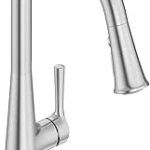Understanding American spending trends provides valuable insights into consumer behavior and economic health. This section delves into current spending patterns, highlighting recent habits and key drivers.
Current Spending Patterns
Recent data reveals that American spending has seen a significant uptick. Consumers are increasingly prioritizing essential goods and services, with a notable rise in online shopping. According to a recent spending report, the surge in e-commerce is a key driver of this trend.
Another critical factor influencing spending in America is the shift towards experiences over material goods. Americans spend more on travel, dining, and entertainment, reflecting a change in spending habits. This shift is driven by a desire for memorable experiences and social engagement.
Top Categories of Expenditure
American spending trends reveal several major categories where consumers allocate their funds. The primary areas include housing, healthcare, and transportation. These essential needs consistently dominate household budgets, reflecting their critical role in daily life.
In recent years, there has been a noticeable shift towards consumer goods, particularly in technology and home improvement. The rise of e-commerce has also influenced spending habits, making it easier for Americans to purchase a wide range of products online.
Services and experiences, such as travel, dining, and entertainment, continue to attract significant spending. Despite economic fluctuations, Americans prioritize these activities, underscoring their value in enhancing quality of life and providing memorable experiences.
Factors Influencing Spending
American spending is shaped by various factors, including economic conditions, social and cultural influences, and technological advancements. These elements collectively determine how and where Americans spend their money.
Economic ConditionsEconomic stability plays a crucial role in spending habits. Factors such as employment rates, inflation, and interest rates directly impact consumer confidence and spending power.
Social and Cultural InfluencesSocial trends and cultural shifts also affect spending in America. For instance, the growing emphasis on sustainability has led to increased spending on eco-friendly products.
Technological advancements further drive changes in spending habits. Innovations in e-commerce and digital payment systems have made it easier for Americans to shop online, influencing overall spending patterns.
Regional Variations in Spending
Spending Differences by State
American spending habits vary significantly across states. Factors such as local economic conditions, cost of living, and cultural influences play a crucial role. States with higher incomes, like California and New York, tend to have higher spending levels. Conversely, states with lower incomes, such as Mississippi and West Virginia, exhibit more conservative spending patterns.
Urban vs. Rural Spending Habits
Urban areas generally see higher spending compared to rural regions. This is due to higher living costs, greater access to a variety of goods and services, and more disposable income. Rural areas, on the other hand, often prioritize essential expenditures, reflecting a more frugal approach to spending in America.
- Urban areas: Higher spending on luxury goods, dining, and entertainment.
- Rural areas: Focus on necessities like groceries, healthcare, and utilities.
Impact of Economic Policies
Economic policies significantly influence American spending habits. Government initiatives, such as stimulus packages and subsidies, can boost consumer confidence and spending. For instance, the CARES Act provided direct financial support to households, leading to increased domestic spending.
Tax policies also play a crucial role. Changes in tax rates and deductions can alter disposable income, affecting how much Americans spend on goods and services. As a result, understanding these policies helps predict shifts in spending patterns.
Consumer Preferences
Shifts in Consumer Priorities
American spending habits have evolved significantly, reflecting shifts in consumer priorities. Increasingly, consumers prioritize experiences over material goods. This trend is evident in the rise of spending on travel, dining, and wellness activities. According to recent spending reports, there is also a growing emphasis on sustainability and ethical consumption.
Popular Brands and Products
Popular brands and products in the U.S. market are adapting to these changing preferences. Brands that offer eco-friendly and socially responsible products are gaining traction. Additionally, tech-savvy consumers are driving demand for innovative gadgets and smart home devices. Key categories include:
- Eco-friendly products
- Smart home devices
- Health and wellness services
Spending by Demographics
Age-Related Spending Trends
American spending habits vary significantly across different age groups. Younger consumers, particularly those aged 18-34, tend to prioritize experiences over material goods. They often spend more on travel, dining out, and entertainment. In contrast, older demographics, especially those over 55, allocate a larger portion of their budget to healthcare and home improvement.
Key age-related spending trends include:
- Millennials: High spending on technology and experiences.
- Gen X: Focus on family-related expenses and home ownership.
- Baby Boomers: Increased spending on healthcare and leisure activities.
Income-Based Spending Patterns
Income levels play a crucial role in shaping American spending habits. Higher-income households tend to spend more on luxury goods, travel, and education. Conversely, lower-income households allocate a larger share of their budget to essential items such as groceries and housing.
Notable income-based spending patterns include:
- High-Income Households: Significant expenditure on luxury items and investments.
- Middle-Income Households: Balanced spending across essentials and discretionary items.
- Low-Income Households: Focus on basic necessities and cost-saving measures.
Trends in Domestic Spending
Household Expenditures
Household expenditures in America have seen notable shifts in recent years. Key areas of spending include housing, transportation, and healthcare. These categories consistently dominate American spending habits, reflecting essential needs and lifestyle choices.
Additionally, there has been a rise in spending on technology and home entertainment. This trend is driven by the increasing integration of digital devices into daily life. As a result, households are allocating more of their budgets to these areas.
Changes in Domestic Spending Over Time
Domestic spending in the U.S. has evolved significantly over the past decade. Economic factors, such as inflation and wage growth, have influenced these changes. For instance, the cost of living has increased, leading to higher expenditures on basic necessities.
Moreover, consumer preferences have shifted towards experiences over material goods. This change is evident in the growing expenditure on travel, dining out, and recreational activities. These trends highlight the dynamic nature of American spending habits.
Future Projections
Expected Shifts in Spending
American spending is anticipated to evolve significantly in the coming years. Economic recovery post-pandemic is likely to drive increased expenditure in travel, dining, and entertainment. Additionally, the rise of remote work may continue to influence spending on home office equipment and technology.
Emerging Trends to Watch
Several emerging trends are poised to shape future spending in America. Sustainability and eco-friendly products are gaining traction among consumers. Moreover, the growth of e-commerce and digital services is expected to persist, altering traditional retail landscapes. Monitoring these trends can provide valuable insights for businesses and policymakers.
Key Insights on American Spending
American spending habits reveal significant trends and implications for both consumers and brands. Recent data shows a shift towards experiential purchases over material goods, driven by younger demographics. Economic conditions and technological advancements also play crucial roles in shaping spending patterns.
Implications for Consumers
Consumers are increasingly prioritizing value and sustainability. Brands that align with these values tend to perform better. Understanding these trends can help consumers make informed decisions and find products that meet their evolving needs.
Implications for Brands
Brands must adapt to changing consumer preferences by offering innovative and sustainable products. Staying attuned to these trends can provide a competitive edge in the market.
FAQs: American Spending Trends
What Are the Main Categories of American Spending?
Americans spend primarily on housing, transportation, and food. Other significant categories include healthcare, entertainment, and education.
How Do Economic Policies Affect Spending?
Economic policies, such as tax changes and stimulus packages, directly impact consumer spending by altering disposable income and confidence.
What Are the Regional Differences in Spending?
Spending in America varies by region, with urban areas typically spending more on housing and services, while rural areas allocate more to transportation and utilities.
How Do Demographics Influence Spending Habits?
Age and income significantly influence spending habits. Younger consumers prioritize technology and experiences, while older demographics focus on healthcare and savings.
What Are the Future Projections for American Spending?
Future projections indicate a rise in spending on technology, healthcare, and sustainable products. Economic recovery and policy changes will shape these trends.


